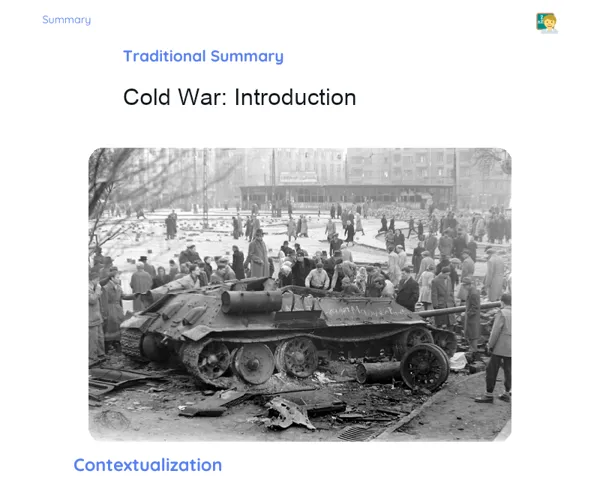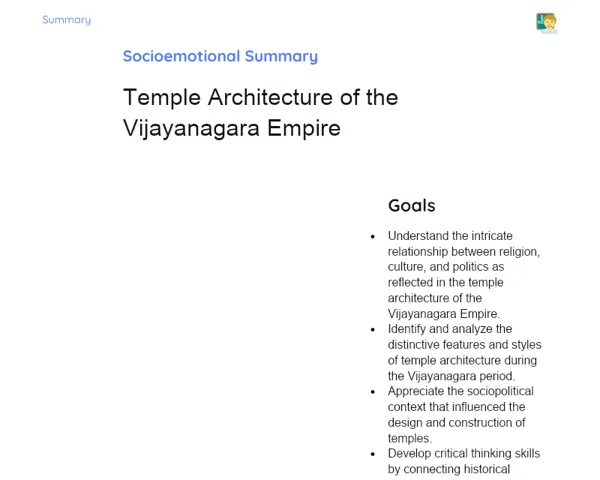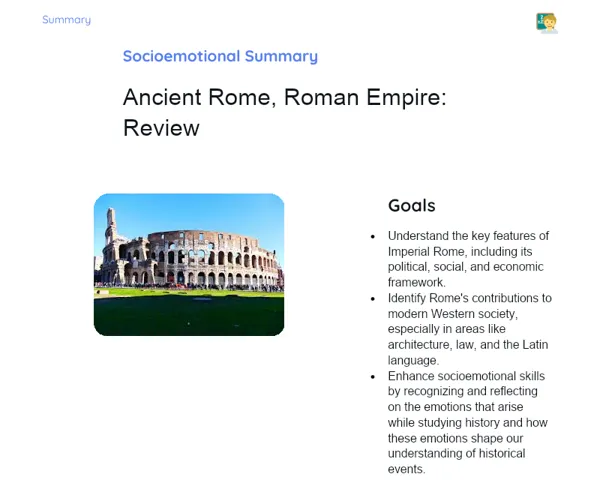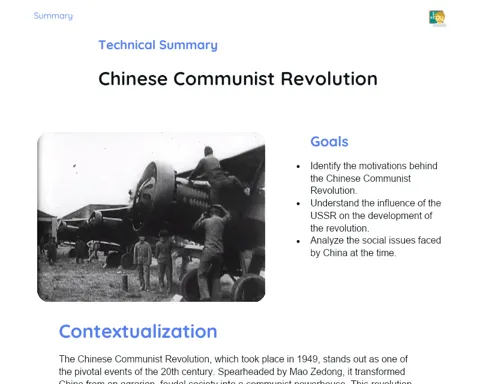Goals
1. Identify the backdrop that led to World War I, including treaties and alliances.
2. Analyze the key battles and military strategies employed during World War I.
3. Examine the technological advances of the time and their influence on the war and the societies of the involved nations.
Contextualization
World War I, which unfolded from 1914 to 1918, was one of the deadliest conflicts in history, dramatically altering the political, economic, and social landscape worldwide. It involved numerous nations and resulted in catastrophic human and material losses. This war not only redrew borders and alliances but also ushered in groundbreaking technological advancements that changed not just the battlegrounds but everyday life. For instance, the advent of tanks, fighter aircraft, and chemical warfare transformed warfare. Understanding these innovations is essential for fields like military engineering, information technology, and social sciences.
Subject Relevance
To Remember!
Background and Alliances
The backdrop of World War I includes a series of pacts and alliances among European nations. These often secret alliances were made to ensure mutual protection but also formed a complicated web of commitments that escalated local disputes into a global conflict.
-
Triple Alliance: Comprised Germany, Austria-Hungary, and Italy.
-
Triple Entente: Comprised France, Russia, and the United Kingdom.
-
Nationalism: Nationalist movements intensified tensions among countries.
Main Battles and Military Strategies
World War I was characterized by fierce battles and innovative military tactics. Trench warfare, heavy artillery strikes, and the deployment of new technologies fundamentally changed traditional warfare.
-
Battle of the Somme: Known as one of the bloodiest battles, resulting in enormous casualties on both sides.
-
Trench Warfare: Created drawn-out stalemates and dire living conditions for the soldiers.
-
Innovative Strategies: Utilization of tanks, machine guns, and aircraft to secure an upper hand.
Technology Developed During the War
World War I saw remarkable technological innovations, with the introduction of new weapons and gear that shifted the dynamics of warfare and had a lasting societal impact.
-
Tanks: Designed to traverse trenches and challenging terrains.
-
Chemical Weapons: The use of mustard gas and chlorine to incapacitate the opposition.
-
Fighter Planes: Deployed for reconnaissance missions and aerial bombardments.
Social Impact of the War
World War I had a deep-seated impact on the societies involved. The war reshaped social, economic, and political frameworks, leading to noteworthy changes that defined the 20th century.
-
Loss of Lives: Millions of soldiers and civilians perished, leaving behind a collective memory of grief.
-
Social Changes: Women entered the workforce in large numbers, filling roles vacated by men at the front.
-
Political Transformations: The war caused the downfall of empires and the rise of new nation-states.
Practical Applications
-
Military Engineering Studies: The innovations of tanks and aircraft during World War I are still analyzed in military engineering programs.
-
International Relations: Grasping the alliances and treaties of World War I is crucial for current geopolitical discussions.
-
Information Technology: The study of technological developments from that time, like message encryption, continues to shape the evolution of digital security systems.
Key Terms
-
Triple Alliance: A military pact among Germany, Austria-Hungary, and Italy.
-
Triple Entente: A military alliance between France, Russia, and the United Kingdom.
-
Trench Warfare: A combat technique where soldiers engaged from trenches dug into the earth.
-
Chemical Weapons: Poisonous substances employed in warfare, such as mustard gas and chlorine.
-
Tanks: Armored vehicles introduced during World War I to navigate difficult ground and trenches.
Questions for Reflections
-
How did these secret alliances escalate local conflicts into a global war?
-
What effect did new technologies of warfare have on the lives of soldiers and civilians during World War I?
-
In what ways did World War I reshape the social and political landscape of the participating nations?
War Diary: A Personal Perspective
Create a fictional 'War Diary' from the perspective of a character living through World War I. This exercise aims to reinforce your understanding of the historical events, technological advances, and social impacts we discussed in class.
Instructions
-
Select a character: soldier, nurse, or civilian.
-
Write a minimum of 5 fictional daily entries inspired by actual historical events.
-
Include a narrative of a significant battle, a reflection on the era's technology, and a personal account of the war's social effects.
-
Get creative: use drawings, maps, and other visual aids to enrich your diary.
-
Share your diary with the class, explaining your creative choices and the lessons learned.



